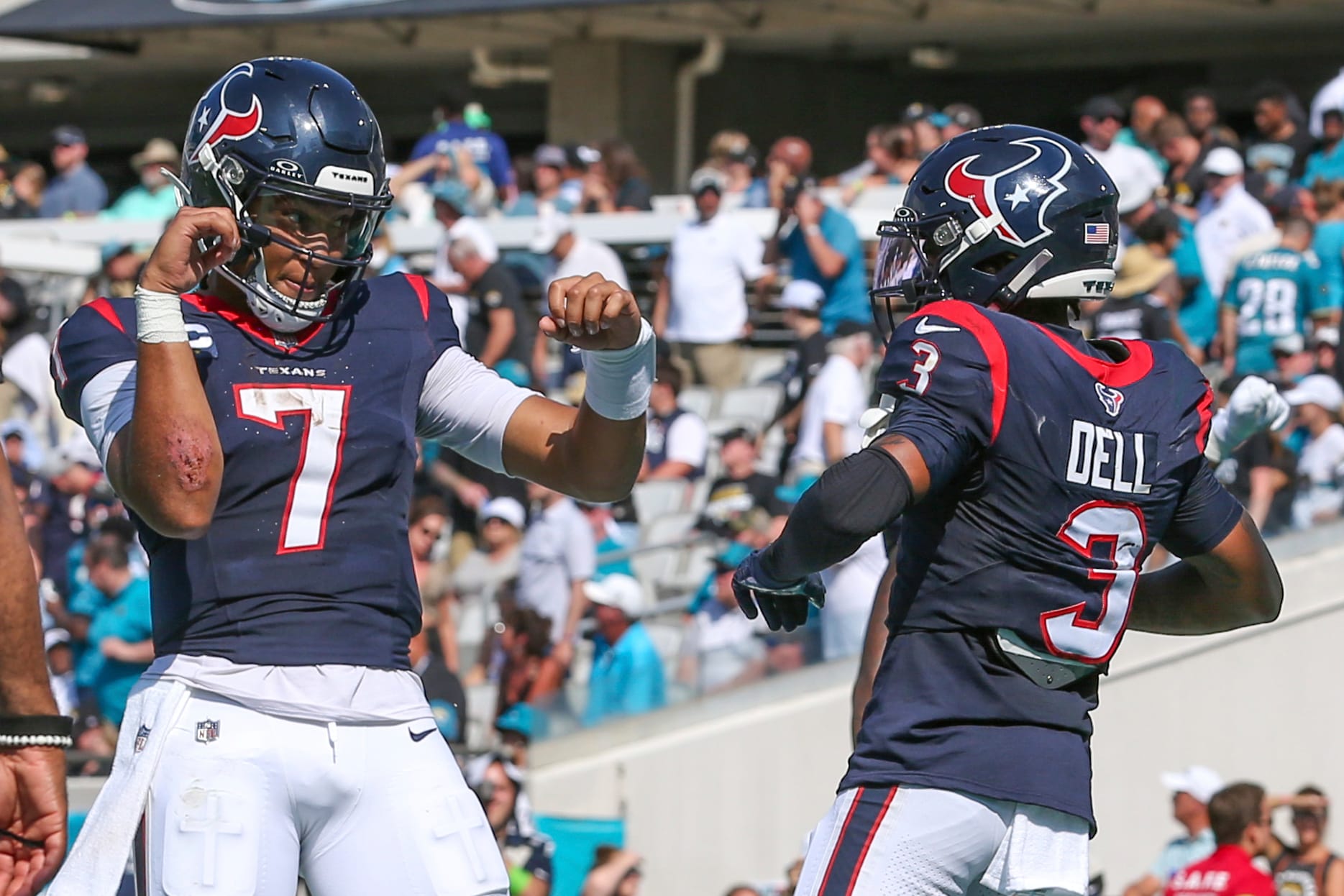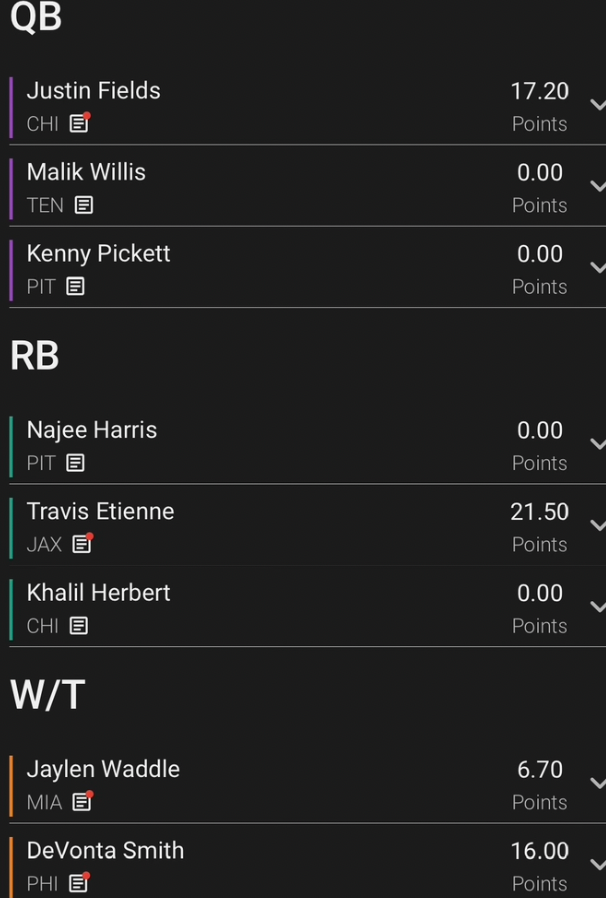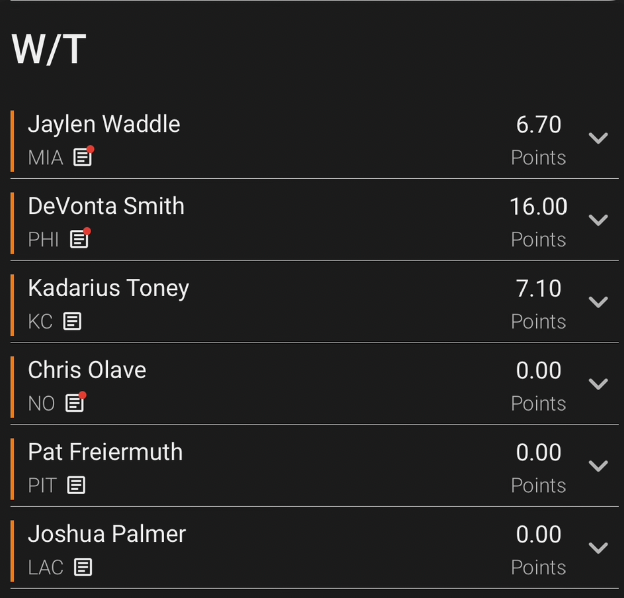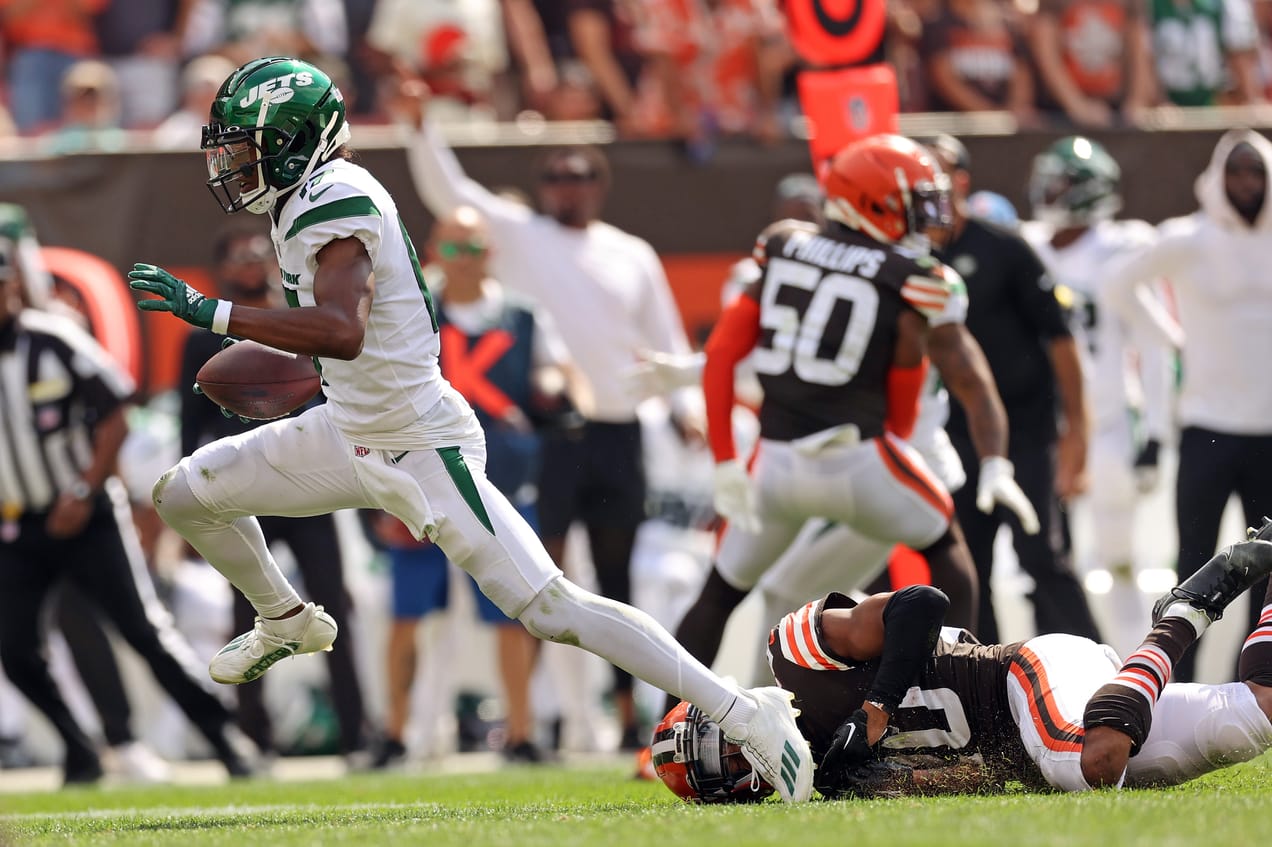
Rookies and Sophomores Strategy Guide
Introducing Daniel Racz
If you're a Legendary Upside podcast listener, you're already familiar with Daniel Racz and aware of his exceptional ability to think through games and price information within the fantasy market. And if you've drafted with LegUp's best ball ranks last summer, or used our playoff best ball dynamic rankings, you've benefited directly from Daniel's insight.
Today, I'm excited to announce Daniel's first article for LegUp, explaining how to attack Underdog's Rookie and Sophomores tournament (which we expect to launch imminently). It's an article I expect to return to frequently as I build out my R&S portfolio.
-Pat
Rookies and Sophomores Strategy Guide
New Year’s Day, 2023. It’s Week 17. For months, best ball thought leaders inundated the platform formerly known as Twitter with posts about how this week of the NFL regular season would be the only thing that mattered.
Taking many of the W17 movement’s ideas to heart, I hoped I, too, would advance a team in the best ball playoffs and have a shot at the two-million-dollar grand prize. I memorized the schedule. I correlated my lineups. I brought back Zach Ertz with Tyler Allgeier. But, alas, I still did not make it to the dance.
Instead, I had a lone team make it to the finals of the Rookies and Sophomores tournament (R&S). I found myself fortunate enough to watch Najee Harris stumble two yards forward on a 2nd & 10 with 66 seconds remaining on Sunday Night Football. This move propelled my team into first place, clinched the tournament, and secured $20,000.
Aside from Playoff Best Ball, R&S is one of the softer best ball tournaments that the kind folks at Underdog offer. For starters, the wrinkles in the rules and vastly different supply and demand dynamics distort traditional notions of positional value. Yet, the field has failed to internalize the changes properly. Below, I will outline a primer on R&S game theory and inform eager drafters.
Rosters, Scoring
Notably, R&S only includes players from the 2023 & 2024 draft classes (finally blocking us from taking Skyy Moore and Kyle Pitts). With such a condensed player pool, wide receivers and tight ends merge into one group. Starting lineups consist of one quarterback, one running back, two players from the wide receiver and tight end bucket (W/T), and one flex. Rosters consist of twelve selections for each of the four contestants.
Player Pool
This year, we have ten quarterbacks with reasonable expectations to start games (CJ Stroud, Anthony Richardson, Caleb Williams, Jayden Daniels, Drake Maye, Bryce Young, Will Levis, JJ McCarthy, Bo Nix, and Michael Penix Jr.). We also have Aidan O’Connell. With such a limited supply available to the four players in any draft room, it seems highly preferable to prioritize quarterbacks. In previous years, I have found the market to continually underrate the value of quarterback points (instead of making up ⅛ of a standard roster, they make up ⅕ in R&S). In the playoff weeks, I want three quarterbacks that I expect to start, but having only two strong options does not immediately kill a team, either.
We have far more distinct tiers at running back than in previous years. A weak incoming running back class primarily drives the lack of quality rotational RBs. No RBs are expected to go in the first 50 picks of the NFL draft and a rookie RB doesn’t show up in the LegUp best ball rankings until RB33. The sophomore class offers some elite options, but it isn’t deep, with no second-year backs anywhere from RB7 to RB29. We have a unique drafting environment.
After Bijan Robinson, Jahmyrr Gibbs, and De’Von Achane, the next group of RBs (Chase Brown, Jonathon Brooks, Trey Benson, Blake Corum, Jaylen Wright, Zach Charbonnet, Jaleel McLaughlin and Tyjae Spears) is relatively flat. My primary consideration in this tier is making sure I don’t only take the rookies in a given draft to mitigate the weaker early production from my rookies. While the LegUp ranks believe Jonathan Brooks to be a strong pick in the Big Board, his low workload is of more significant concern in R&S.
If the market has declared any of these backs meaningfully better than the rest, I will likely be underweight the over-priced back. Similarly, the cheaper backs within this group will likely become targets. Tank Bigsby, Roschon Johnson, Kendre Miller, MarShawn Lloyd, Ray Davis, Braelon Allen, and Israel Abanikanda are acceptable late-round depth pieces.
The options at pass-catcher are plentiful. While these are not concrete tiers to think of the players within, they help illustrate the positional depth.
- Early receivers who project strongly:
- Puka Nacua, Marvin Harrison Jr., Rashee Rice, and Tank Dell.
- Strong rookie profiles and breakout options:
- Malik Nabers, Rome Odunze, Zay Flowers, Brian Thomas Jr., Sam LaPorta, Jayden Reed.
- WRs who could break out and produce usable weeks with occasional spikes but at lower frequencies:
- Jordan Addison, Jaxon Smith-Njigba, Dalton Kincaid, Brock Bowers, and Josh Downs.
- Rookies and Sophomores that should have little competition for routes:
- Adonai Mitchell, Xavier Worthy, Troy Franklin, Keon Coleman, Ladd McConkey, Marvin Mims, Demario Douglas, Michael Wilson, Roman Wilson, Xavier Legette and Ricky Pearsall.
- Lastly, we have true dart throws:
- Quentin Johnston, Jalin Hyatt, Jonathan Mingo, Jermaine Burton, Devontez Walker, Ja'Lynn Polk, Javon Baker, Malachi Corley, Jalen McMillan,Trey Palmer, Luke Musgrave, Ben Sinnott, Jamari Thrash, Brenden Rice, Johnny Wilson, Ainias Smith, Malik Washington and Luke McCaffrey.
- If you have a strong, evidence-based belief that any of this last group will massively outperform expectations or receive strong draft capital, target them within reason. Given their low ownership in the tournament, even mixing them into ten percent of teams will make you overweight.
- Quentin Johnston, Jalin Hyatt, Jonathan Mingo, Jermaine Burton, Devontez Walker, Ja'Lynn Polk, Javon Baker, Malachi Corley, Jalen McMillan,Trey Palmer, Luke Musgrave, Ben Sinnott, Jamari Thrash, Brenden Rice, Johnny Wilson, Ainias Smith, Malik Washington and Luke McCaffrey.
Correlation
Given the condensed player pool, there are few opportunities to stack a receiver with your QB picks. Since the tournament also closes before the NFL draft, rookies have ambiguous landing spots, making stacking more difficult.
There are two premier stacks:
- C.J. Stroud and Tank Dell
- Anthony Richardson and Josh Downs
Bryce Young will likely receive a pass-catcher in the second round, but trying to guess which receiver lands in Carolina produces a small correlated win, at best. Jordan Addison has a good chance to play with J.J. McCarthy, but we are dealing with non-guaranteed outcomes.
My inclination is that drafters will under-utilize the correlated pairs, so I would aggressively try and attach Dell and Downs to their respective quarterbacks.
A Leverage Game
With a small-field finale (56 people in past iterations of the tournament), it’s less important who is on your roster in Week 17 than what percentage of the field also has those players.
In 2022, Justin Fields had a strong week 15, but his highly disappointing Week 16 with ten fantasy points forced all but one of the Fields’ teams to miss the finals. Similarly, Najee Harris’s disappointing Week 16 performance and an unremarkable regular season heavily tilted the finals field toward the other players in Harris’ ADP range.
Given their extremely weak recent performances, having Fields or Harris on a lineup in Week 17 was appealing, as their projections had not meaningfully changed despite their low finals advance rate.
Fortunately, my lone lineup had both Fields and Harris, making their performances in the finale incredibly impactful as my lineup differentiated itself from the competition without much help from the rest of its players (Kadarius Toney’s 7.1 points ended up counting toward my final score).


Najee finished with 19.3.
When the cards flip over during Week 17, you want your players to be as low-owned as possible. But, simultaneously, you cannot know the finals ownership that any player will come in at. Additionally, heavy ownership likely suggests strong past performance, so a team solely including low-owned players would project rather poorly. With this in mind, I maintain a relatively balanced portfolio at each position and rarely deviate significantly from the 25 percent base exposure.
However, given the limited quarterback pool, ownership in the early playoff weeks will likely be highly dependent on the quarterbacks who performed well in the regular season (in addition to those who stayed healthy enough). So, giving yourselves more shots on goal at quarterback enables more paths to differentiation in the small-field final, albeit at the cost of more position players. Given the binary nature of quarterbacking (a quarterback either starts a game and scores points or does not) compared to the variable nature of the pass-catchers (a player with 20 routes can easily outscore a player with 40 routes in a one-week sample), I believe the R&S market under-appreciates the value of having multiple outs to strong quarterback play every week.
Though anecdotal, my lineup that advanced with Fields despite his poor Week 16 utilized a (relatively) strong Kenny Pickett performance, while also having Malik Willis available to score points. Unless I see the market change tendencies this year, 3QB builds will be under-utilized.


